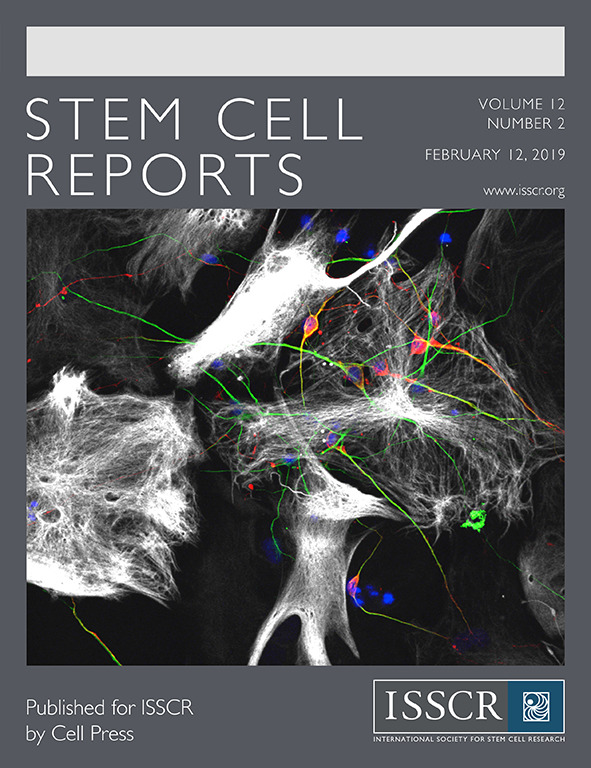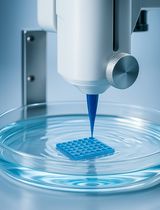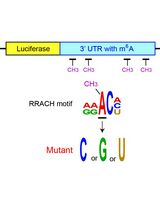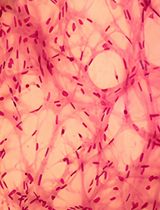- EN - English
- CN - 中文
3D Organoid Formation from the Murine Salivary Gland Cell Line SIMS
小鼠唾液腺SIMS细胞系的三维类器官形成
发布: 2019年10月05日第9卷第19期 DOI: 10.21769/BioProtoc.3386 浏览次数: 6215
评审: Giusy TornilloJuan Mauricio GarréAnonymous reviewer(s)
Abstract
Salivary glands consist of multiple phenotypically and functionally unique cell populations, such as the acinar, ductal, and myoepithelial cells that help produce, modify, and secrete saliva (Lombaert et al., 2011). Identification of mechanisms and factors that regulate these populations has been of key interest, as salivary gland-related diseases have detrimental effects on these cell populations. A variety of approaches have been used to understand the roles different signaling mechanisms and transcription factors play in regulating salivary gland development and homeostasis. Differentiation assays have been performed with primary salivary cells in the past (Maimets et al., 2016), however this approach may sometimes be limiting due to tissue availability, labor intensity of processing the tissue samples, and/or inability to long-term passage the cells. Here we describe in detail a 3D differentiation assay to analyze the differentiation potential of a salivary gland cell line, SIMS, which was immortalized from an adult mouse submandibular salivary gland (Laoide et al., 1996). SIMS cells express cytokeratin 7 and 19, which is characteristic for a ductal cell type. Although adult acinar and myoepithelial cells were found in vivo to preserve their own cell population through self-duplication (Aure et al., 2015; Song et al. 2018), in some cases duct cells can differentiate into acinar cells in vivo, such as after radiation injury (Lombaert et al., 2008; Weng et al., 2018). Thus, utilization of SIMS cells allows us to target and analyze the self-renewal and differentiation effects of ductal cells under specific in vitro controlled conditions.
Keywords: Salivary gland (唾液腺)Background
In vitro differentiation assays are a remarkable tool that enables us to analyze the potency of cells without relying on in vivo models. Cells in these assays can be manipulated for gene expression to, for instance, analyze their differentiation ability. While previous protocols have described the differentiation potential of primary salivary gland cells in vitro, our protocol is optimized for the use of the SIMS cell line (Laoide et al., 1996; Maimets et al., 2016). SIMS cells express cytokeratin 7 and 19, which is characteristic for a ductal cell type. Although adult acinar and myoepithelial cells were found in vivo to preserve their own cell population through self-duplication (Aure et al., 2015; Song et al. 2018), in some cases duct cells can differentiate into acinar cells in vivo, such as after radiation injury (Lombaert et al., 2008; Weng et al., 2018). Thus, utilization of SIMS cells allows us to target and analyze the self-renewal and differentiation effects of ductal cells under specific in vitro controlled conditions. Our recent work shows that SIMS cells have the ability to differentiate into unique populations of acinar, myoepithelial, and duct cells in 3D differentiation conditions, that normally produce, modify and secrete saliva in vivo (Lombaert et al., 2011; Athwal et al., 2019). This protocol describes the workflow necessary for the generation and analysis of 3D differentiated SIMS cells. SIMS cells are cultured in a 3D matrigel/collagen matrix over a period of 7-9 days. Matrigel is a solubilized basement membrane preparation extracted from the Engelbreth-Holm-Swarm (EHS) mouse sarcoma, which is rich in several growth factors and extracellular matrix proteins, such as laminin-1, collagen IV, and heparin sulfate proteoglycans (Patel et al., 2016). Matrigel has been shown to induce differentiation of stem/progenitor cells and outgrowth of already differentiated cell types by causing polarization of cells embedded in or on top of it. For SIMS grown in this 3D matrix, organoid formation post single cell culture is apparent around day 5 of culture. These organoids are also stained either via cryosectioning or in 3D to analyze for differentiation markers and cell populations. Alterations, such as cell transfections, transductions and/or media changes, to this condition can easily be made to address specific research questions (Athwal et al., 2019). The media components were adjusted using literature from both existing salivary and mammary gland differentiation protocols, which deemed necessary to induce differentiation of the SIMS cells in vitro. Here we show the robust use of this cell line to address specific research questions without having to rely on primary salivary gland cells.
Materials and Reagents
- 500 ml filter units with 0.22 μm filter (Fisher, catalog number: 974102)
- 24-well tissue culture plates (Thermo Fisher, catalog number: 142475)
- T75 tissue culture flasks (Thermo Fisher, catalog number: 156499)
- 2 ml pipettes (Fisher, catalog number: 13-678-25C)
- 10 cm dishes (Thermo Fisher, catalog number: 150464)
- 15 ml Falcon tubes (Corning, catalog number: 35296)
- 1 ml pipettes (Fisher, catalog number: 13-678-25B)
- Forceps (Fisher Scientific, catalog number: XX6200006P)
- Razor blade (Fisher Scientific, catalog number: 12-640)
- Glass slides (VWR, catalog number: 89500-466)
- SIMS cells (available per request)
- Sterile DMEM medium + 4.5g/L high glucose + L-glutamine without sodium pyruvate (Invitrogen, catalog number: 11965-092)
- Sterile 1x PBS-Ca+2-Mg+2 free (Thermo Fisher, catalog number: 110010031) or 1x HBSS-Ca+2-Mg+2 free (Thermo Fisher, catalog number: 14175079)
- Penicillin-Streptomycin (Thermo Fisher, catalog number: 15140122)
- Sterile USDA-approved FBS (Sigma-Aldrich, catalog number: F2442-500ML)
- 0.25% Trypsin-EDTA (Sigma-Aldrich, catalog number: T4049-100ML)
- Epidermal growth factor (EGF) (Sigma-Aldrich)
- Glutamax (Gibco/ThermoFisher, catalog number: 35050061)
- Fibroblast growth factor-2 (FGF2) (R&D, catalog number: 3139FB025)
- N2 (Thermo Fisher, catalog number: 17502048)
- Dexamethasone (VWR, catalog number: 80056-298)
- Triiodothyronine (Sigma-Aldrich, catalog number: 709719)
- Retinoic Acid (Thermo Fisher, catalog number: AA4454077)
- Hydrocortisone (Sigma-Aldrich, catalog number: H0888)
- Cholera toxin (Sigma-Aldrich, catalog number: C8052)
- Calcium, 99%, Granular (Fisher, catalog number: AC201180050)
- Growth factor reduced Matrigel (BD Biosciences, catalog number: 354230)
- Collagen Type I, Rat Tail (Millipore, catalog number: 2790888)
- 4% PFA (VWR, catalog number: AAJ61899-AK)
- Trypan blue 0.4% (Thermo Fisher, catalog number: 15250061)
- O.C.T. Compound (Fisher scientific, catalog number: 23-730-571)
- SIMS subculture media (see Recipes)
- Differentiation media (see Recipes)
Equipment
- Water bath (Thermo Scientific, catalog number: TSGP02)
- Vacuum pump aspirator (standard)
- CO2 incubator (standard)
- Cryotome (standard)
- Brightfield microscope (standard)
- Confocal laser scanning microscope (standard)
Software
- ImageJ software (http://imagej.net, available online for download)
Procedure
文章信息
版权信息
© 2019 The Authors; exclusive licensee Bio-protocol LLC.
如何引用
Athwal, H. K. and Lombaert, I. M. A. (2019). 3D Organoid Formation from the Murine Salivary Gland Cell Line SIMS. Bio-protocol 9(19): e3386. DOI: 10.21769/BioProtoc.3386.
分类
发育生物学 > 形态建成 > 器官形成
干细胞 > 成体干细胞 > 维持和分化
细胞生物学 > 细胞分离和培养 > 3D细胞培养
您对这篇实验方法有问题吗?
在此处发布您的问题,我们将邀请本文作者来回答。同时,我们会将您的问题发布到Bio-protocol Exchange,以便寻求社区成员的帮助。
Share
Bluesky
X
Copy link














